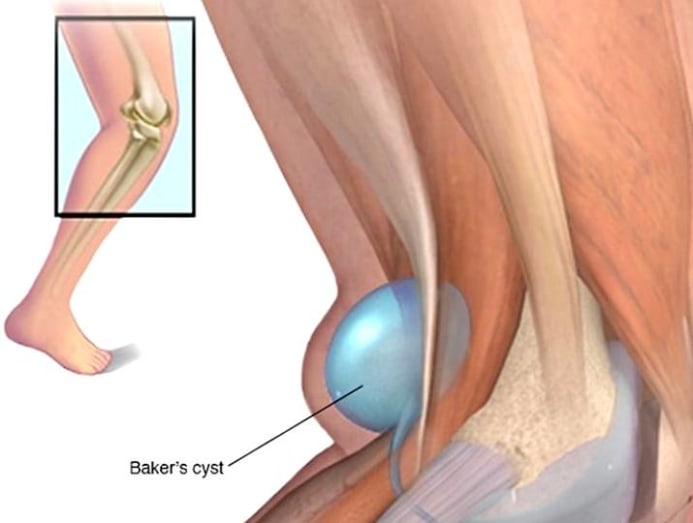What are those odd bumps on your body – and when should you be worried?
CNA Lifestyle speaks to the experts to find out what these unwanted skin lumps are and when you should have them removed.

(Photo: Unsplash)
So, there you are soaping up in the shower, shampooing your hair or shaving when your fingers skim over an unfamiliar bump. Your heart rate quickens as your mind starts to imagine scenarios that are transforming a relaxing shower into a health scare.
Before you work yourself up into a frenzy, know that it is common to find growths under your skin, said Dr Melissa Teo, general surgeon at Mount Elizabeth Novena Hospital. "Skin lumps are common complaints especially if they are sited in easily noticeable areas such as the arms, legs or front of the body. Larger lumps that are under the skin in areas such as the neck, breast or abdomen can also be detected," she said.
To be clear, these superficial bumps are different from the growths found within the body, such as breast lumps and ovarian cysts. And the older you get, the more bumps you’ll find. “Certain triggering factors such as gene mutation, the environment, unhealthy lifestyles or diet may cause the lumps to grow naturally or uncontrollably,” said Dr Lim Kheng Tian, consultant at Khoo Teck Puat Hospital’s Department of Surgery.
Dr Teo added that the exposure to sunlight and a decreased immunity as one ages can also lead to lumps developing more easily.
Superficial skin lumps such as epidermal cysts are twice more common in males than females.
ARE YOU PRONE TO LUMPS?
Lumps are caused by many factors, not just one. And the reasons could be known, unknown, congenital or acquired, said Dr Lim. “An example of a known cause is an epidermal cyst that develops as a result of a plugged follicular orifice. This leads to an accumulation of keratin that forms a lump on the skin.”
READ: What are those bits of hanging skin on your body? And how do you get rid of them?
When it comes to genetic causes, he highlighted that 10 per cent of neurofibroma – a type of nerve tumour that forms soft lumps on or under the skin – is related to Neurofibromatosis Type 1, a genetically inherited disease.
Gender may also play a part. “For example, superficial skin lumps such as epidermal cysts are twice more common in males than females,” said Dr Lim. Meanwhile, women may experience thyroid lumps “at least three times more” than men, he added.
“These are based on research evidence. There are many theories why this happens, such as male versus female hormones, better personal hygiene and genetics like autoimmune diseases.”
READ: Have you been ignoring a nagging pain? Here's why you should see a doctor
One of the most common conditions that causes lumps, bumps or swellings are cysts, according to the Cleveland Clinic’s website. Some common ones are Baker’s cysts (fluid-filled bulges that form behind the knee) and ganglion cysts (rounded lumps filled with a jelly-like fluid that develop along tendons and joints). In Singapore, the common lumps are epidermal cysts and lipomas, said Dr Lim.

WHEN SHOULD YOU SEE A DOCTOR?
Most bumps and lumps are benign. Such lumps “are generally soft, mobile, very slowly or not growing in size over the years, and have a well demarcated margin,” said Dr Lim, in which case, surgical removal can be held off if you’re not bothered by the appearance.
But it is still a good idea to have a medical opinion first before deciding to leave the lump alone, advised Dr Teo.
She cautioned that patients should definitely have it checked if a lump that was not present before appears and is rapidly enlarging. "In addition, any lump that causes pain, bleeding or any kind of discomfort should be attended to."
Other worrying signs, added Dr Lim, include the presence of non-healing ulcers, an irregular or unclear margin, a solid and hard consistency (and can be painless or painful), and/or being fixed to an underlying tissue or bone.
READ: What’s that thing on your nose? How to stay on guard against skin cancer
You’ll definitely need to seek a doctor’s advice if signs such as unintentional weight loss, poor appetite, lethargy, pallor, jaundice, bone pain and swollen lymph glands accompany the development of a lump, said Dr Lim.
But in any case, see a doctor if you find a bump or lump. “It is very often advisable to have it assessed by a doctor, particularly for reassurance, observation, monitoring or further investigation although the majority of lumps on our bodies are harmless, non-cancerous or benign in nature,” said Dr Lim.
WHAT IS DONE TO ASSESS AND TREAT LUMPS?
Not all lumps require a biopsy or extracting small pieces of tissue for lab assessment, said Dr Lim, when the patient’s history, physical examination and imaging scans safely conclude a benign lump. “However, biopsy becomes necessary if the doctors are unsure of the nature of the lump.”
READ: Do you habitually pick at your skin? You could be suffering from excoriation disorder
Other than surgery, other forms of treatment for benign lumps can be conservative (just monitoring) or prescriptive. “If the benign lump develops superficial infection like cellulitis, it can be treated with antibiotics. If it becomes a painful large abscess, surgical incision and drainage will be warranted,” said Dr Lim.

Surgical removal can be carried out with local anaesthesia (for small lumps) or general anaesthesia (for big ones). The risks from surgery of this nature are generally very low, said Dr Lim, provided the patient has no chronic medical conditions such as diabetes, and is also not on any chronic medication such as blood thinner or steroid therapy.
Still, patients have to be prepared for the potential consequences such as bruising, bleeding, soft tissue swelling, pain or numbness, and, in the later part, developments such as scarring or a recurrence of the lump if it was not completely excised, said Dr Lim.
“Ultimately, the people with benign lumps need to decide for themselves if they are willing to undergo such surgery after the doctors have provided them sufficient treatment information,” he said.





